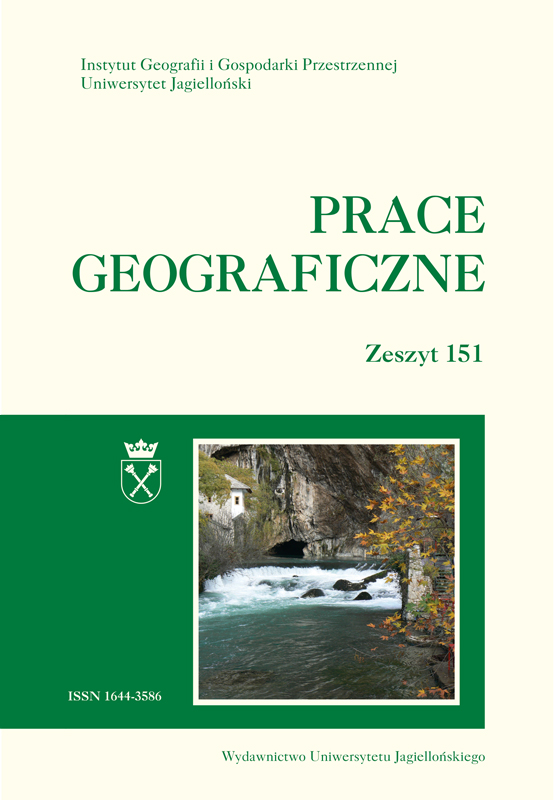Powódź błyskawiczna jako zdarzenie przyrodnicze i społeczne na przykładzie powodzi w Wojcieszowie 5 lipca 2012 roku
Flash flood as a natural and social event – the case of the flood in Wojcieszów, on July 5th, 2012
Author(s): Wojciech Biernacki, Łukasz Fiedeń, Jarosław Działek, Paweł FranczakSubject(s): Media studies, Environmental Geography
Published by: Wydawnictwo Uniwersytetu Jagiellońskiego
Keywords: flash flood; social memory of floods; mental sketch mapping; social media;
Summary/Abstract: By definition, a flood is a natural event with social and economic consequences. These effects can be both direct and immediate as flood losses, as well as indirect and long-lasting, influencing local community’s perception of the geographical environment they live in and of possible local disasters. Flash floods in mountainous areas constitute a particular type of hazard. They appear when intense rainfall over a small area causes violent and destructive flooding. Such an event occurred on July 5th, 2012 in the upper Kaczawa catchment when heavy rainfall formed sudden overflowing in small river and stream catchments in the town of Wojcieszów (Złotoryja county, Dolnośląskie voivodship in Poland). Precipitation was characterized by a very high intensity up to 69 mm•h–1 with the daily sum reaching 94 mm. Such high rainfall occurred on a very small area stretching 25 km in length and 10–12 km in width. It caused a very rapid concentration of flood wave with the culmination reached within 30–40 min. after the most intense precipitation. The flow of Kaczawa river in Świerzawa reached 115 m3 •s–1 (qmax = 0,86 m3 •s–1•km2 ), though it did not stand out from historic floods in this catchment. Much higher specific discharges were measured for the Kaczawa catchment in Wojcieszów Dolny (1.95 m3 •s–1•km2 ) and for the Olszanka catchment (2.06 m3 •s–1•km2 ). The overflow of water in smaller catchments was catastrophic and caused considerable damage. The main aim of the paper is to analyse the social memory of the 2012 flash flood in Wojcieszów several years after its occurrence. The research included mental sketch mapping of flooded areas conducted two and four years after the flood happened and an analysis of flood recordings available on the YouTube video-sharing website. The findings show that, despite being surprised by the sudden flood that hit their town, memories about that event are slowly fading away. With time passing by, flood witnesses tend to mark a progressively smaller than actual area covered by flood waters. They are not likely to watch historic flood recordings on YouTube either. The authors believe that the decline of social memories of the flood may translate into lower hazard awareness resulting in inadequate preparedness for a possible future flood.
Journal: Prace Geograficzne
- Issue Year: 2017
- Issue No: 151
- Page Range: 27-51
- Page Count: 30
- Language: Polish

